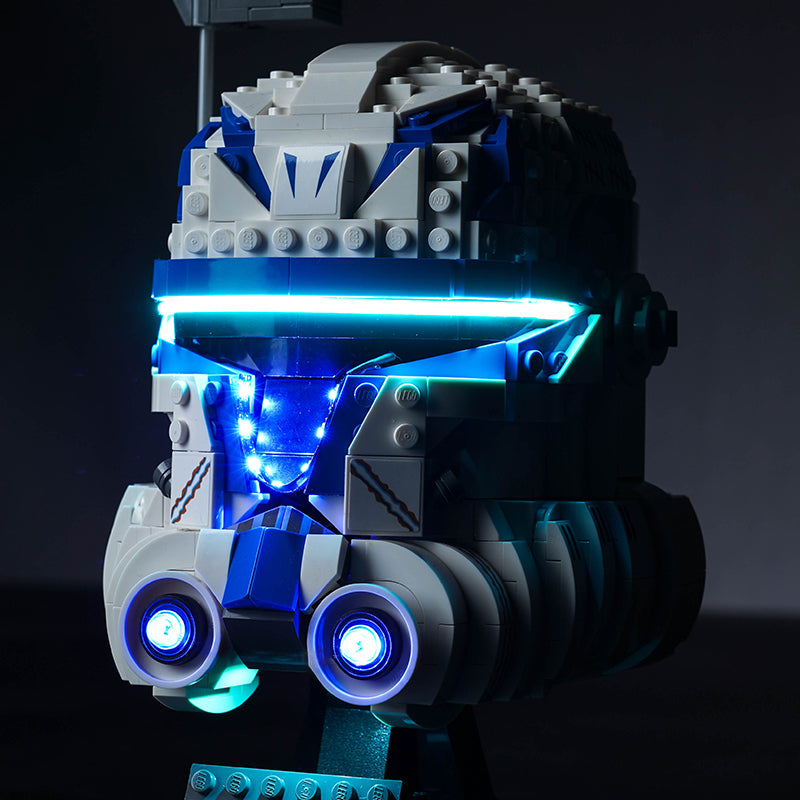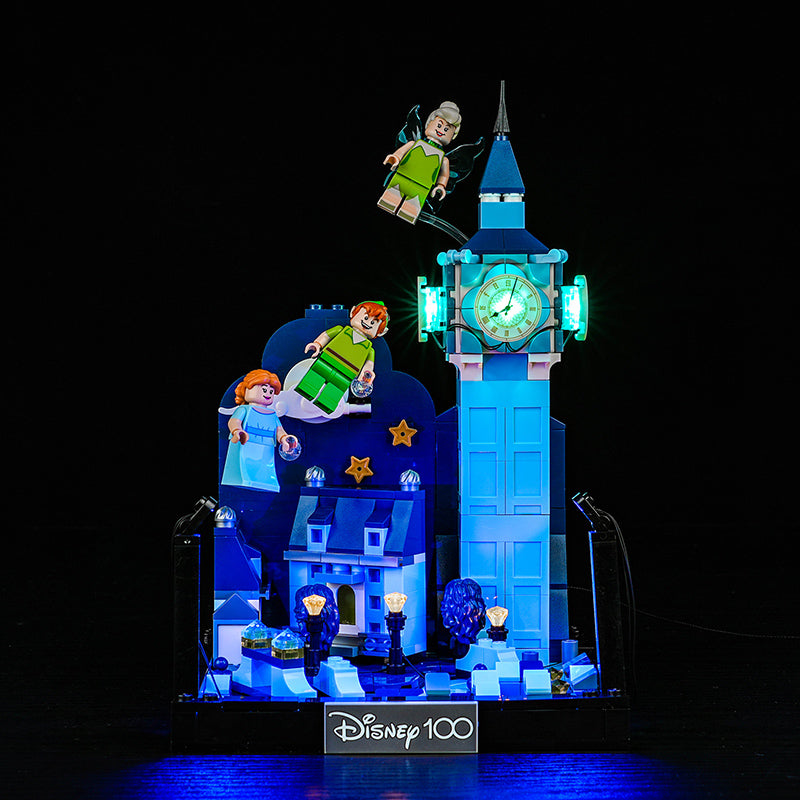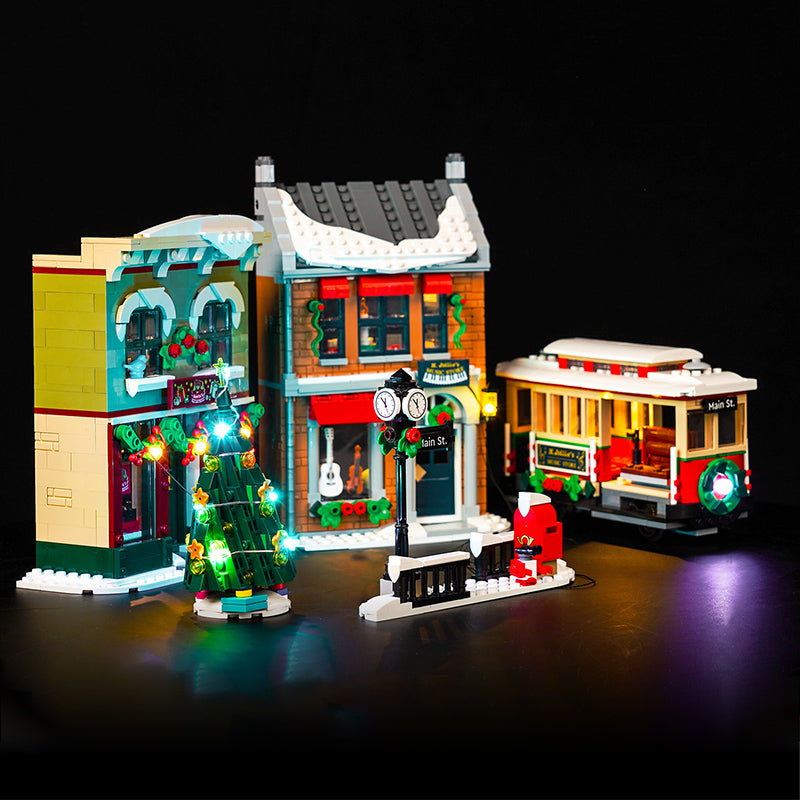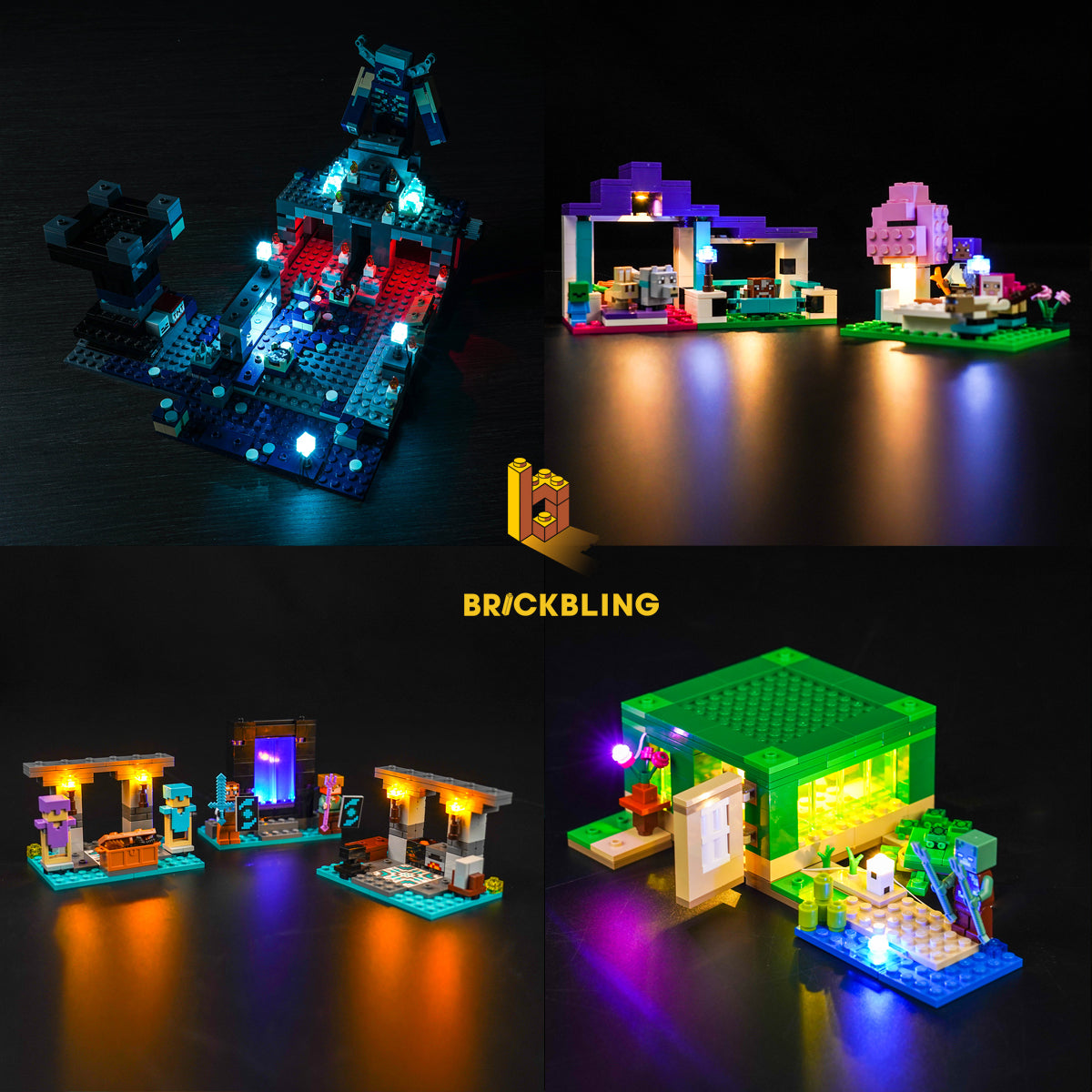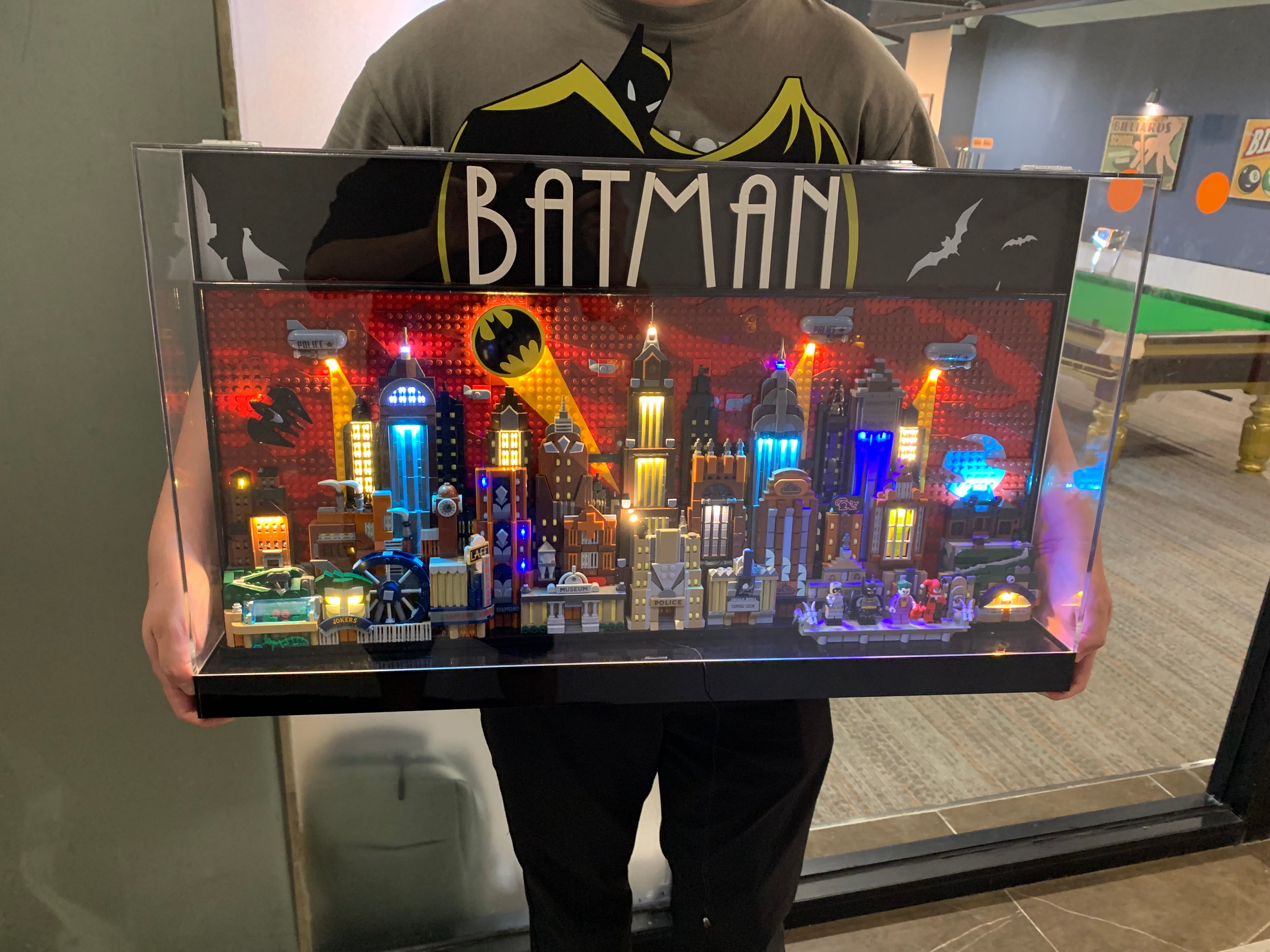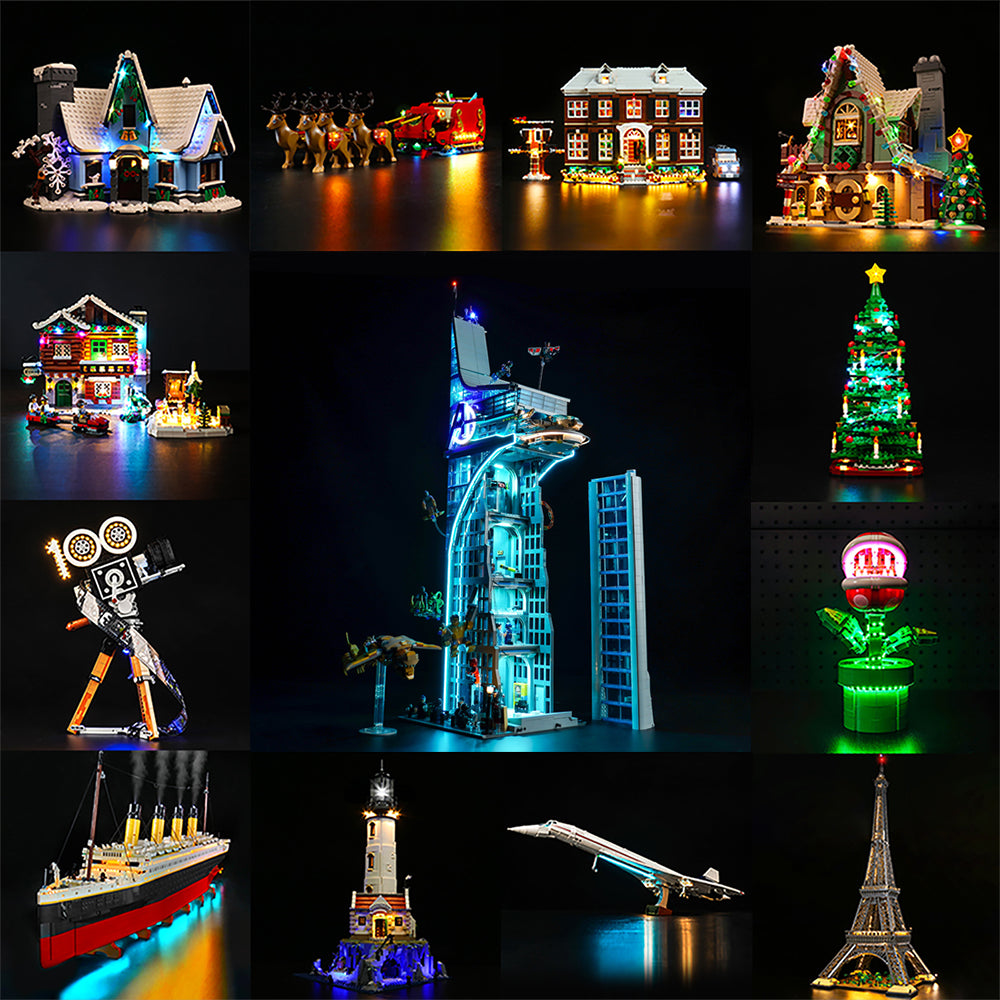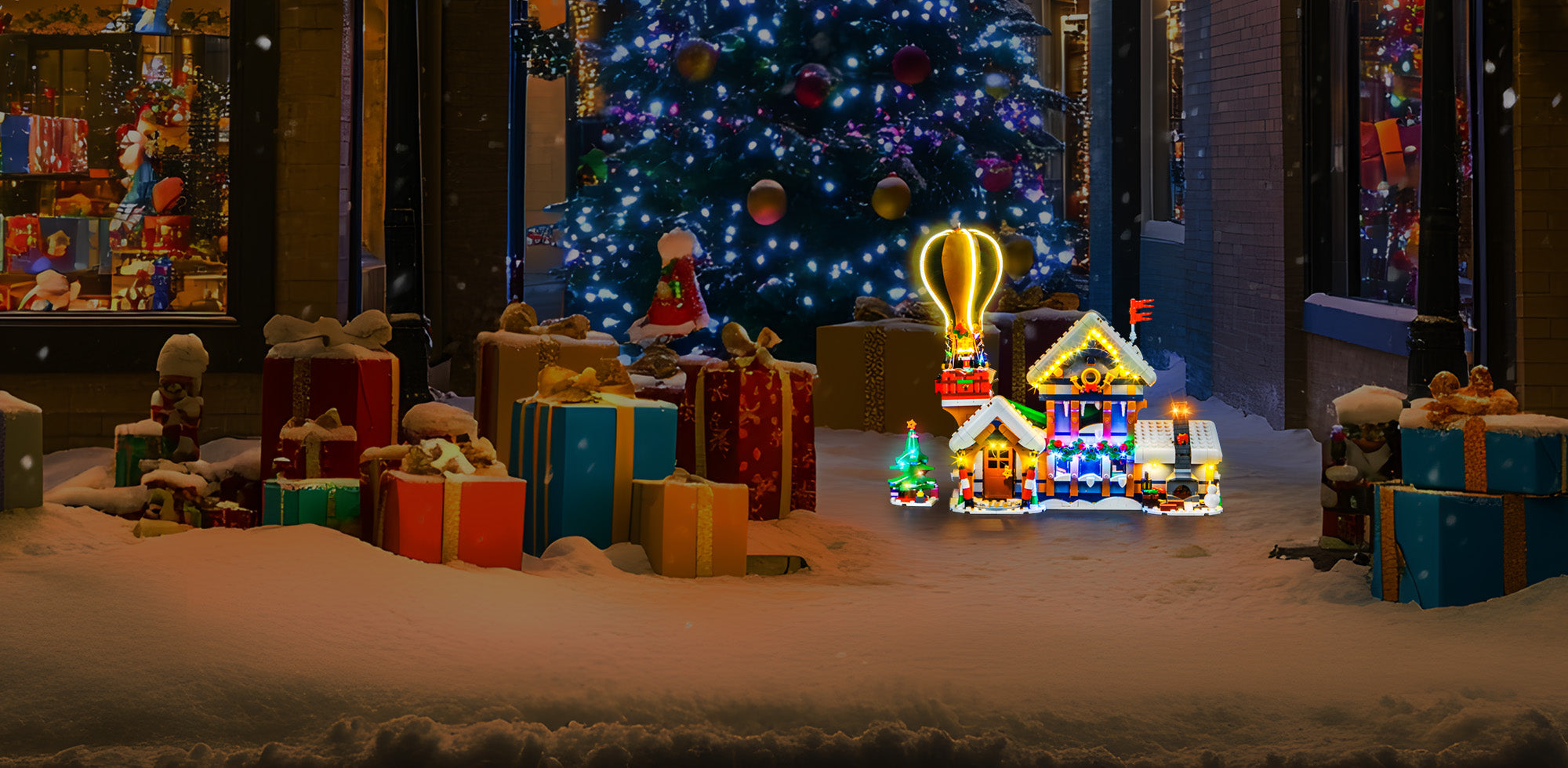Introduction
Did you know that the right lighting can turn a simple LEGO build into a mesmerizing masterpiece? It’s true. Just as a well-placed spotlight can transform a humble stage into a grand theater, the proper use of lighting in LEGO projects can elevate them from mere constructions to works of art. This is where the magic of "connection light" comes into play – a key concept in the world of LEGO building.
But why is lighting so crucial in LEGO builds? The answer lies in the power of illumination to tell a story. Just like in cinema, where lighting sets the mood and directs the viewer’s attention, in LEGO builds, lighting highlights the intricate details and unique features of your creation. It brings focus to the parts you're most proud of and adds an extra layer of realism and professionalism to your work.
This article will delve into the art of powering multiple lights in your LEGO builds. We'll explore the world of "connection light" – a term that might sound technical but is simply about connecting various light elements to create a harmonious and dynamic lighting system in your LEGO projects. Whether you're a seasoned builder or new to the game, understanding how to effectively use connection lights will take your builds to the next level, transforming them from static displays into dynamic, illuminated worlds that glow with possibility.
Section 1: Understanding LEGO Lighting Basics
Subsection 1.1: Overview of LEGO Lighting
The world of LEGO lighting is as diverse and creative as the builds themselves. At its core, lighting enhances LEGO models by adding depth, mood, and a sense of realism. Imagine a cityscape LEGO model; without lights, it's just a static replica. But add in the warm glow of street lamps and the soft lighting of building windows, and suddenly, the scene comes alive, resembling a bustling, lived-in city.
There are various types of lights used in LEGO builds, each serving a different purpose. LED lights are the most common, prized for their longevity and energy efficiency. They come in various forms: tiny bulbs for intricate detailing, strip lights for a more diffused effect, and even flickering lights to mimic fire or engine thrusters. Fiber optic lights, though less common, offer a unique way to add a delicate glow to smaller, more intricate parts of the build.
Color plays a significant role too. Cool whites and blues can give a futuristic feel, perfect for spacecraft or high-tech builds. In contrast, warm yellows and oranges can simulate the cozy interior of a house or the blazing engines of a rocket. The choice of color can dramatically affect the mood and atmosphere of the build.
Subsection 1.2: The Role of Connection Lights
"Connection light" refers to the method of connecting different light elements within a LEGO build to create a cohesive and functional lighting system. It’s not just about placing lights; it’s about how they interact and complement each other to enhance the overall aesthetic and narrative of the build.
The importance of connection lights cannot be overstated. They serve as the backbone of your lighting setup, ensuring that each light element works in harmony with others. This could mean synchronizing the flicker of a fireplace with the ambient lighting of a room or coordinating the flashing lights of a police car with its siren.
The variety of connection lights available caters to different needs and complexities of builds. Simple plug-and-play kits are ideal for beginners or smaller projects, requiring minimal technical knowledge. For more advanced builders, customizable kits offer greater control, allowing for intricate lighting patterns, adjustable brightness, and even programmable color changes.
Understanding the basics of LEGO lighting and the role of connection lights is crucial. It's not just about making your build bright; it’s about bringing it to life. In the next sections, we’ll delve into how to choose the right connection lights and guide you through the process of integrating them into your LEGO masterpieces.
Section 2: Choosing the Right Connection Light
Subsection 2.1: Factors to Consider
Selecting the appropriate connection light for your LEGO build is a crucial step in the lighting process. This decision can significantly impact the overall look and feel of your creation. Here are key factors to consider:
Compatibility: Not all lights will fit every LEGO model. It’s essential to choose lights that are compatible with the size and scale of your build. For instance, smaller, more compact lights are ideal for intricate models like a detailed cityscape, while larger, brighter lights may be better suited for bigger sets like a spaceship or a castle.
Brightness: The brightness of your lights should be proportional to your build. Overly bright lights can wash out smaller models, while dim lights might not be sufficient to illuminate larger sets effectively. Consider the environment where your LEGO build will be displayed. If it's a well-lit room, subtler lighting may be enough. In contrast, a darker setting might require brighter lights to make your build stand out.
Color Options: The color of your lights can set the mood of your build. Warm colors like reds and yellows can create a cozy, inviting atmosphere, perfect for a LEGO home or street scene. Cooler colors like blues and whites can convey a modern or futuristic tone, suitable for sci-fi models or high-tech gadgets. Some lights offer color-changing options, giving you the flexibility to switch moods or themes.
Subsection 2.2: Recommended Connection Lights
When it comes to recommended connection lights, there are several options that cater to different needs and skill levels:
Plug-and-Play Kits: Ideal for beginners or those looking for a simple, hassle-free lighting solution. These kits usually come with pre-configured lights and easy-to-follow instructions, making them a great starting point for those new to LEGO lighting.
Customizable LED Strips: For those who want more control over their lighting design, customizable LED strips are a fantastic choice. They can be cut to length and even connected together for larger builds. These strips are perfect for creating ambient lighting or highlighting specific areas of your build.
Programmable RGB Lights: For the advanced builder, programmable RGB lights offer the ultimate in customization. These lights allow you to choose from a wide range of colors and patterns, and can often be controlled via a remote or a smartphone app. They are ideal for dynamic builds where lighting plays a central role in the presentation.
Specialty Lights: There are also specialty lights available, such as flickering lights to mimic fire or glowing orbs for magical effects. These can add a unique touch to your builds, bringing specific elements to life in a way that standard lights cannot.
Choosing the right connection light involves considering the compatibility, brightness, and color options in relation to your LEGO build. Whether you opt for a simple plug-and-play kit or a more advanced programmable system, the right lighting can transform your LEGO creation from a static model to a dynamic, eye-catching display.
Section 3: Step-by-Step Guide to Connecting Multiple Lights
Subsection 3.1: Preparing Your LEGO Set
Before you dive into the electrifying world of LEGO lighting, it’s crucial to prepare your LEGO set properly. This preparation will ensure a smooth installation process and help you achieve the best lighting effect possible. Here's a step-by-step guide to setting up your LEGO build for lighting:
Step 1: Plan Your Design
Visualize the End Result: Imagine how you want the final build to look. Where do you want the focal points to be? What features do you want to highlight?
Sketch a Layout: If possible, sketch out where you intend to place the lights. This plan doesn’t have to be intricate, but it should give you a clear idea of the lighting distribution.
Step 2: Choose a Suitable Workspace
Ample Space: Ensure you have enough space to work comfortably without disturbing the build.
Good Lighting: Adequate lighting in your workspace is essential so you can see the small parts and intricate details of your set.
Organized Tools and Materials: Keep your lights, cables, and any necessary tools within reach and organized.
Step 3: Prepare the LEGO Set
Clean the Set: Dust and debris can hinder the installation of lights, so start with a clean set.
Disassemble Carefully: Depending on where the lights will go, you might need to partially disassemble your LEGO build. Do this carefully to avoid damaging any pieces.
Identify Cable Routes: Determine where the wires from the lights will run. Plan routes that are discreet and won’t interfere with the visual appeal of your set.
Step 4: Check the Light Components
Test Lights Before Installation: Ensure all the lights work before integrating them into the set. This step can save you the hassle of reworking sections if a light turns out to be faulty.
Familiarize with Components: If you’re using a kit, familiarize yourself with its components. Understand how the lights connect to the power source and to each other.
Step 5: Consider Power Source Placement
Accessibility: The power source should be easily accessible for turning the lights on and off.
Discretion: It should be placed in a way that it doesn’t detract from the aesthetics of the build.
Stability: Ensure the power source is securely positioned to avoid dislodging during the build or display.
Step 6: Anticipate Future Changes
Ease of Modification: Leave room for potential future adjustments or additions to your lighting setup.
Modular Design: If possible, design your lighting in a way that allows for parts of the build to be removed or modified without disrupting the entire lighting system.
Preparing your LEGO set for lighting is a critical step in creating a beautifully illuminated display. It involves thoughtful planning, careful disassembly, and strategic placement of lights and cables. By following these steps, you can ensure that your LEGO build is not only brilliantly lit but also maintains its structural integrity and aesthetic appeal.
Subsection 3.2: Installing the Connection Light
Once your LEGO set is prepped and ready, it’s time to bring it to life with lights. Here are detailed steps to guide you through the process of integrating connection lights into your LEGO build:
Step 1: Begin with Key Focal Points
Start from the Main Features: Install lights in the primary areas you want to highlight. These could be windows, vehicle headlights, or the centerpiece of your build.
Work from Inside Out: Begin with lights that are deeper within the build and work your way out. This strategy helps in managing wiring more effectively.
Step 2: Secure the Lights
Attach Lights Firmly: Use LEGO-compatible clips or adhesive pads provided with your lighting kit to secure the lights in place.
Be Mindful of LEGO Bricks: Ensure that the lights and wires do not prevent LEGO bricks from fitting securely.
Step 3: Connect to Power Source
Follow the Kit’s Instructions: If you're using a kit, follow the instructions for connecting the lights to the power source.
Ensure Consistent Power Flow: Make sure all connections are secure and there is a consistent power flow to each light.
Step 4: Test as You Go
Regularly Check the Lighting: After installing a few lights, pause and test them. This approach helps in identifying any issues early in the process.
Step 5: Final Adjustments
Adjust Light Positioning: Once all lights are installed, switch them on and look at your build from different angles. Adjust the positioning of any lights if necessary to achieve the desired effect.
Subsection 3.3: Routing and Managing Wires
Proper wire management is crucial in a LEGO lighting project. It not only keeps the build neat but also ensures the functionality and durability of the lighting setup. Here are tips for effectively routing and managing wires:
Tip 1: Plan Wire Routes
Discreet Pathways: Plan routes for your wires that are hidden or blend in with the build. Use the natural lines and contours of the LEGO set to your advantage.
Tip 2: Secure the Wires
Use Clips or Adhesive Tapes: Secure loose wires with LEGO-compatible clips or adhesive tapes to prevent them from hanging or getting caught.
Tip 3: Avoid Wire Tension
Leave Some Slack: Ensure that wires have some slack to prevent tension, which could lead to disconnection or damage over time.
Tip 4: Minimize Wire Visibility
Route Behind and Under Bricks: Whenever possible, route wires behind or under LEGO bricks and plates to keep them out of sight.
Tip 5: Organize Wire Bundles
Bundle Wires Together: If several wires run along the same route, bundle them together using small zip ties or twist ties. This organization makes the setup look neater and more professional.
Tip 6: Consider Future Maintenance
Easy Access for Troubleshooting: Arrange your wires so that you can access them easily in case you need to troubleshoot or make changes in the future.
By following these steps and tips, you will be able to integrate connection lights seamlessly into your LEGO build and manage the wiring effectively, ensuring a clean, professional-looking finish.
Section 4: Troubleshooting Common Lighting Issues
Subsection 4.1: Common Challenges
Installing multiple lights in a LEGO build can sometimes present challenges. Here are some typical problems that builders might encounter:
Challenge 1: Lights Not Working
This can occur due to faulty bulbs, loose connections, or issues with the power source.
Challenge 2: Uneven Lighting
Sometimes, certain sections of the build may appear brighter or dimmer than others, leading to an uneven lighting effect.
Challenge 3: Wires Getting in the Way
Managing multiple wires can be tricky, and they can sometimes interfere with the structure or aesthetics of the build.
Challenge 4: Difficulty Integrating Lights into Complex Builds
In intricate or densely packed LEGO models, finding space for lights and routing wires can be challenging.
Challenge 5: Overheating of Lights
While rare with LEDs, overheating can be a concern, especially in tightly enclosed spaces.
Subsection 4.2: Solutions and Tips
Facing these challenges can be frustrating, but there are practical solutions and tips to help you overcome them:
Solution 1: For Non-Working Lights
Check Connections: Ensure all wires are properly connected.
Test Individual Components: Isolate and test each light and wire to find the faulty component.
Inspect Power Source: Make sure the power source is functioning correctly.
Solution 2: For Uneven Lighting
Adjust Light Position: Reposition lights for more even distribution.
Use Diffusers: If available, use light diffusers to soften and spread the light more evenly.
Solution 3: For Wire Management
Re-route Wires: Find alternative pathways that are less intrusive.
Use Smaller Gauge Wires: If possible, switch to thinner wires that are easier to conceal.
Solution 4: For Complex Builds
Plan in Advance: Spend extra time planning the light placement and wire routing before starting.
Customize Light Elements: Modify or custom-fit light elements as needed for a better fit.
Solution 5: For Overheating
Ensure Ventilation: Make sure there’s enough airflow around the lights.
Limit Continuous Usage: Avoid leaving the lights on for extended periods.
Troubleshooting is an integral part of any LEGO lighting project. By understanding common challenges and knowing how to address them, you can ensure a smooth and successful installation, bringing your LEGO creations to life with beautiful, functional lighting.
Section 5: Advanced Techniques and Creative Ideas
Subsection 5.1: Creative Lighting Configurations
Once you’re comfortable with the basics of LEGO lighting, you can explore more advanced techniques and creative ideas to enhance your builds. Here are some suggestions to spark your imagination:
Idea 1: Dynamic Lighting Effects
Experiment with Effects: Incorporate flickering lights for fireplaces, flashing lights for police cars, or pulsating lights for sci-fi control panels.
Create Motion: Use light strips to simulate movement, such as flowing water or a passing train.
Idea 2: Interactive Features
Add Sensors: Incorporate motion sensors or touch-sensitive switches to activate specific lights or trigger light sequences.
Sound Integration: Combine lights with sound effects for an immersive experience.
Idea 3: External Lighting Displays
Take Your Build Outside: Illuminate your LEGO builds for outdoor displays using weather-resistant lights.
Create Light Shows: Sync lights with music for dazzling light shows that captivate audiences.
Subsection 5.2: Integrating Technology
Technology opens up endless possibilities for LEGO lighting projects. Here are some ways to integrate tech into your builds:
Option 1: Microcontrollers
Use Arduino or Raspberry Pi: Program microcontrollers to control lighting sequences, adjust brightness, or synchronize lights with other elements.
Option 2: Smart Home Integration
Connect to Smart Home Systems: Integrate LEGO lighting with smart home platforms like Google Home or Amazon Alexa for voice-controlled lighting effects.
Option 3: Mobile Apps
Develop Custom Apps: Create mobile apps to control your LEGO lighting setup remotely or automate lighting schedules.
By incorporating advanced techniques and technology into your LEGO lighting projects, you can push the boundaries of creativity and bring your builds to life in ways you never thought possible.
Conclusion
From simple plug-and-play kits to intricate programmable systems, the world of LEGO lighting offers endless opportunities for creativity and expression. By understanding the basics of LEGO lighting, choosing the right connection lights, and mastering installation techniques, you can transform your static LEGO models into dynamic, illuminated works of art.
Remember, the key to successful LEGO lighting lies in careful planning, attention to detail, and a willingness to experiment. Whether you're a novice builder or a seasoned pro, there's always something new to learn and explore in the electrifying world of LEGO lighting. So, grab your bricks, fire up those LEDs, and let your imagination shine bright!

